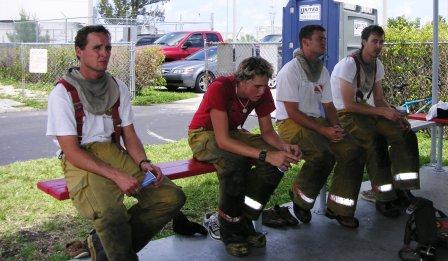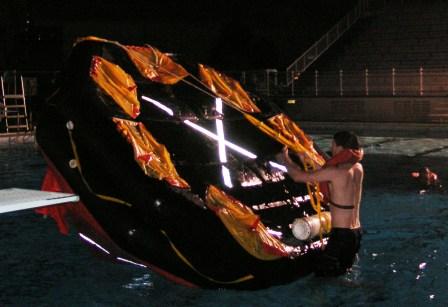Archive for April, 2008
Left for Dead
I just finished reading Left for Dead by Nick Ward. It is an account of Nick’s experience during the 1979 Fastnet a book that is worth a read. Last week my instructor at IYT constantly made a statement I don’t agree with racing and racers are unsafe. I believe that is a very general statement to make. Yes in racing you take risks that you don’t when going out sailing for pleasure however, if it wasn’t for racing we would not push the envelope and go out in adverse weather conditions and push the boat and people to their limits. Without pushing ourselves to the limits we wouldn’t know what breaks and why. I didn’t learn that much from the book merely it reminded me of reasons the safety rules we comply with are in effect. Without races like the Fastnet and Sydney Hobart that have turned fatal we would not have development in safety standards.
88 boats out of the 303 starters finished that race in 2008 29 years later only 60 out of the 271 starters finished the race. The conditions were not as extreme as the 1979 Fastnet however, people retired. There has been a lot written about RORC’s decision to postpone the race and why so many boats retired. RORC is I believe compiling a report on the reasons for retirement. My take after reading the book, after 5 Fastnets and retiring ourselves in 2008 is not that people are any more or less qualified to do the race nor are their boats less well prepared (in fact with the more stringent rules their boats are better prepared) but that simply RORC’s contentious (brave) decision to postpone was in my mind the correct one. This decision meant that unlike in 1979 the fleet was still in the
Sailing is something to be enjoyed it is not meant to be a mission in survival or a test of search and rescue techniques. It is not meant to be sport that leaves our families in fear of us not returning when we leave the dock nor one where we risk the life of members of the emergency services when they have to come and rescue us. Remembering this and the 15 people who died in the Irish Sea reminds me each year to spend time and money to take safety courses in an attempt to mitigate the risk involved and hopefully allow me to survive if the unforeseen occurs. Take the time this year to do a course that actually requires you to get in the water, set off a flare, right a liferaft and recover a MOB. Have fun on the water wear a lifejacket and clip in.
MOB
Recently on SA there have been postings regarding MOB situations. I am by no means and expert on the situation. I have spent considerable amount of money in the last year on safety equipment of my own which I take with me when ever I go offshore. I am not suggesting that everyone should do this it simply the precautions I take as I am in the position of sailing on many different boats and with many different crew. I have also generally been one of the most experienced people on the boat and am therefore someone who rightly or wrongly is asked to take command of a situation. This is worrying as I am as likely if not more likely to be the person who falls off the boat due to the nature of my activity onboard. So although it is bulky I have started to wear a bum bag around my waist when the conditions warrant in this bag is the following:
1)VHF
2)GPS
3)Personal EPIRB
4)Laser Flare
The theory is that if I go over and am conscious I will be able to communicate my position via VHF to the boat and will be able to communicate my distress via EPIRB and show my position using the laser flare. Lets hope I never have to use it
Running Rigging for Offshore Sailing
Rig prep before a long offshore can make or break your race.
1) Pull the rig and fully check all fittings and also sheaves for sharp edges
2) If you don’t have all line halyards install them – get rid of the wire rope halyards although they are cheaper they are not as light as wire and aren’t as flex resistant. High tech line is the way to go and you can save more weight by tapering them and make sure your rigger put spectra chafe gear where the halyard sits on the sheave.
3) What type of race is this? Upwind add in a spare jib sheet you can also use for change sheet. Downwind have a spare guy and chafe gear where the guy goes through the end of the pole. Carry an extra halyard and make all lines extra long so that in case of bad chafe you can resplice a few times.
MASTHEAD: The 2 most common masthead setups for spin halyards are externally hung blocks off of U-bolts, or a “Tri-sec†type where the halyards exit straight off the sheaves over chafe bars or rollers.
If you have externally hung blocks, make sure the bracket that extends them out from the masthead goes far enough to allow the blocks to swing well clear of the headstay or anything else. Also check the wear at the interface of the U-bolt and the block shackle. These often tend to saw through each other. It is becoming very popular to use spectra webbing or lashing here instead of shackles. Many wraps of spectra can be incredibly strong, light, and can flex forever. Make sure that there are no sharp metal edges touching the line.
For a tri-sec style masthead, if you had wire halyards get rid of them (more on this later). These mastheads are fine as long as the chafe bars or rollers have enough smooth surface area for the rope to bend around and spread the load out. Install new rollers if needed.
Make sure you have 2 spin halyards. It is customary to run at least one spin halyard external for these downwind races. The extra windage won’t hurt off the wind. I prefer not to run more than one external to avoid having too much line flopping around.
AFTERGUYS: The afterguys take a lot of wear at the pole tip so one thing to check is the pole ends. For boats over 35’ or so I highly recommend an offshore style pole end with a lot of bearing area for the rope. For the guy itself it is hard to beat single braid spectra for its wear and flex life. Use a heavy “donut†to keep the shackle from messing the pole end or getting stuck. On larger boats you may need an aluminum donut that won’t split under high load. Svendsens makes a high load aluminum donut for boats over 50 feet.
SHACKLES: For both the spin sheet and the guys use large bail shackles. These bear on the donuts better and allow enough room to hook the guy into the sheet shackle bail. Use “internal release†style shackles that can be spiked open under load and also have less of a tendency to “flog offâ€. Use spectra chafe guard in high chafe areas i.e. where a halyard goes over a sheave or through a jockey or spinnaker pole.
If you have a jib furler, remember to keep the spin halyards out of the way. Flip them behind the shrouds when not in use. One good “halyard wrap†and a halyard can be messed up good.
JIBSHEETS: Go for a line with a high tech core. Dacron is too stretchy for jibsheets unless you want to constantly adjust them for every puff and wave. For Bay racing jibsheet shackles are nice for tacking, but for ocean sailing bowlines are fine.
Line fiber types
SPECTRA: Best flex life. Very slippery so also great for chafe. Very low stretch under oscillating loads. Problem: Under steady high loads, spectra “creeps†or gets slowly longer. Usually not the greatest for main and jib halyards.
TECHNORA: Very strong and low stretch, with little or no creep. Does not have the flex life of spectra and should be protected from the sun. Great for main and jib halyards.
VECTRAN: Also very strong and low stretch, with little or no creep. A little better flex life than technora but not near that of spectra. Great for main, jib and universal (combo jib & spin) halyards. Rather expensive.


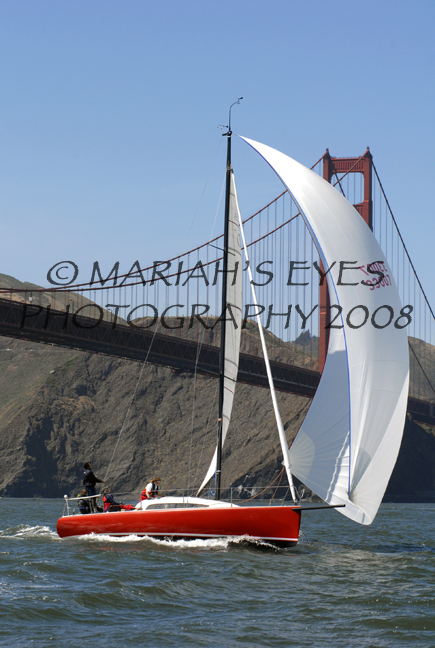
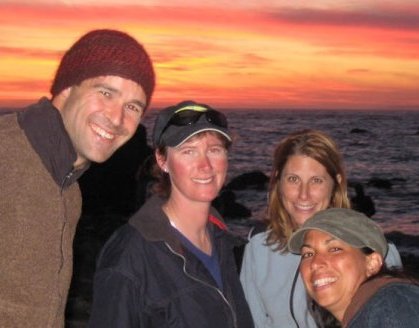
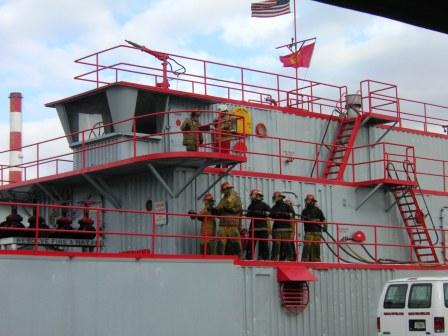 Â
 
